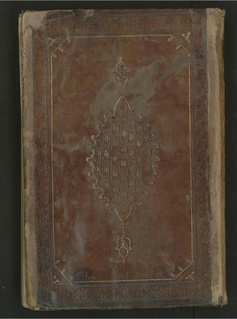
Abū Bakr Muḥammad ibn Zakariyyāʾ al-Rāzī, 864 or 865 – 925 or 935 CE, was a Persian physician, philosopher and alchemist, widely considered one of the most important figures in the history of medicine. He also wrote on logic, astronomy and grammar.
Razi or al-Razi is a name that was historically used to indicate a person coming from Ray, Iran.

Fakhr al-Dīn al-Rāzī or Fakhruddin Razi often known by the sobriquet Sultan of the Theologians, was a Persian polymath, an influential Islamic scholar and one of the pioneers of inductive logic. He wrote various works in the fields of medicine, chemistry, physics, astronomy, cosmology, literature, theology, ontology, philosophy, history and jurisprudence. He was one of the earliest proponents and skeptics that came up with the concept of Multiverse, and compared it with the astronomical teachings of Quran. A rejector of the geocentric model and the Aristotelian notions of a single universe revolving around a single world, Al-Razi argued about the existence of the outer space beyond the known world.

Abū al-Qāsim Khalaf ibn al-'Abbās al-Zahrāwī al-Ansari, popularly known as Al-Zahrawi (الزهراوي), Latinised as Abulcasis, was an Arab Andalusian physician, surgeon and chemist. Considered to be the greatest surgeon of the Middle Ages, he has been referred to as the "father of modern surgery".

Ibn Abi Sadiq al-Naishaburi, Abu al-Qasim ‘Abd al-Rahman ibn ‘Ali was an 11th-century Persian physician from Nishapur in Khorasan. He was a pupil of Avicenna. As he composed a popular commentary on the Aphorisms of Hippocrates, he was known in some circles as "the second Hippocrates". Ismail Gorgani, the author of Zakhireye Khwarazmshahi, completed his studies under his guidance.

Abu Ismaïl Abdullah al-Herawi al-Ansari or Abdullah Ansari of Herat (1006–1088) also known as Pir-i Herat "Sage of Herat", was a Muslim Sufi saint who lived in the 11th century in Herat. One of the outstanding figures of 5th/11th century Khorasan, Ansari was a commentator of the Qur'an, scholar of the Hanbali school of thought (madhhab), traditionalist, polemicist, and spiritual master, known for his oratory and poetic talents in Arabic and Persian.
Abu'l-Husayn al-Basri was a Mu'tazilite jurist and theologian. He wrote al-Mu'tamad fi Usul al-Fiqh, a major source of influence in informing the foundations of Islamic jurisprudence until Fakhr al-Din al-Razi's al-Mahsul fi 'Ilm al-Usul.

The Naqvi people are an orthodox Shia community found in Iran, Iraq and South Asia claiming to be descendants of Shia Imam Ali Naqi. Conventionally, Naqvis are Sayyids, who trace their patrilineal descent from Muhammad through his grandson, Husayn ibn Ali.

Abu Tahir Sulayman al-Jannabi was a Persian warlord and the ruler of the Qarmatian state in Bahrayn, who in 930 led the sacking of Mecca.
Abū al-Qāsim ‘Alī ibn Ḥusayn al-Sharīf al-Murtaḍā (commonly known as: Sharīf Murtadhā, Sayyid Murtadhā, also popular as Alam al Huda was one of the greatest Shia scholars of his time and was one of the students of Shaykh al-Mufīd. He was the elder brother of Al-Sharif al-Radi, the compiler of Nahjul Balagha. He was four years older than his brother. He lived during the era of Buyid Dynasty. It was the golden age of Arabic literature, and great poets like Al-Mutanabbi and Al-Ma`arri were among his contemporaries.
Abu Hatim, Muhammad ibn Idris al-Razi (811–890) was a notable hadith scholar and Athari theologian born in Ray. He is the father of Ibn Abi Hatim.

The name Abu al-Qasim or Abu'l-Qasim, meaning father of Qasim, is a kunya or attributive name of Islamic prophet Muhammad, describing him as father to his son Qasim ibn Muhammad. Since then the name has been used by the following:
Abū Marwān ʿAbd al-Malik ibn Abī l-Qāsim ibn Muḥammad ibn al-Kardabūs al-Tawzarī was a Tunisian historian, perhaps of Andalusian origin. He was born in Tozeur and studied the hadith and jurisprudence under Abū Ṭāhir al-Silafī at Alexandria. His best-known work is Taʾrīkh al-Andalus, a history of Muslim Spain. His Kitāb al-iktifāʾ is the earliest source to attribute the title Emperor of the Two Religions to King Alfonso VI of León. He died in Tunis.
Abu Bakr Rabee Ibn Ahmad Al-Akhawyni Bokhari was a Persian physician and the author of the Hidayat al-Muta`allemin Fi al-Tibb, the oldest document in the history of Iranian Traditional Medicine (ITM). He lived during the Golden Age of Iranian-Islamic medicine and his book was used as a reference text for medical students long after his death. Al-Akhawyni Bokhari wrote about anatomy, physiology, pathology, pharmacology signs, symptoms and treatment of the disease of his time. His reputation was based on the treatment of patients with mental illnesses.
Abū Ṭāhir al-Silafī, was a leading scholar and teacher in twelfth-century Egypt. Among his many works is the Mu‘jam al-safar, a biographical dictionary: 'covering from 511/1117 to 560/1164, the Mu‘jam can be regarded as a digest of intellectual life in late Fāṭimī Alexandria'. Al-Silafī ran the second madrasa to be built in Egypt, built in Alexandria in 1149 on the order of Alexandria's then-governor, the Shāfi‘ī al-‘Ādil ibn Salār, vizier to Caliph al-Ẓāfir. It was named ‘Ādiliyya after its founder, but became popularly known as al-Silafiyya after its leading teacher. Probably in 1118, al-Silafī married Sitt al-Ahl bint al-Khalwānī; their daughter Khadīja married the scholar Abu’l-Ḥarām Makkī b. ‘Abd al-Raḥmān al-Ṭrabulsī, whose son, Abu’l-Qāsim ‘Abd al-Raḥmān, also became an important scholar in Alexandria.
Sirāj ud-DīnMuhammad ibn Muhammad ibn 'Abd ur-Rashīd Sajāwandī also known as Abū Tāhir Muhammad al-Sajāwandī al-Hanafī and the honorific Sirāj ud-Dīn was a 12th-century Hanafi scholar of Islamic inheritance jurisprudence, mathematics astrology and geography. He is primarily known for his work Kitāb al-Farāʼiḍ al-Sirājīyah, commonly known simply as "the Sirājīyah", which is a principal work on Hanafi inheritance law. The work was translated into English by Sir William Jones in 1792 for subsequent use in the courts of British India. He was the grand-nephew of qari Muhammad ibn Tayfour Sajawandi. He lies buried in the Ziārat-e Hazrat-o 'Āshiqān wa Ārifān in Sajawand.







